
Students research soybean food uses in this activity developed from CASE Food Science curricula.
- Subject:
- Agriculture
- Career and Technical Education
- Material Type:
- Activity/Lab
- Lesson Plan
- Author:
- Owl Nest Manager
- Date Added:
- 03/14/2022


Students research soybean food uses in this activity developed from CASE Food Science curricula.

Let’s make Cheetos! In this food science unit, students walk through careers in the food industry, sensory analysis of food, the formulation of a product, branding and marketing of a food product, and finally making physical product of fried cheese puffs. Written by Tyler Schindler
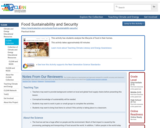
This activity has students analyze the lifecycle of food in their homes.

This project brings the gourmet food truck craze from cities across North America to your classroom and home town. Many of these food trucks aren’t selling your typical hot dogs and fries, they are coming up with interesting foods for people to eat on the go. Students will develop recipes for inventive food and drink menu items, including planning safety and sanitation needs, equipment, and other elements of a food truck business. Written by Kristyn Jones, Norris High School, NE

In this psychology real-life investigation, students investigate the food on their plates, identify the source location of the foods they consume on a regular basis, and calculate their carbon footprint. The goal is to identify their diet (its source of origin – where was it grown, packaged, shipped from, etc.), its impact on their subjective well-being (also known as "happiness"), and its impact on their health as well as climate justice. Students conduct research to identify one potentially problematic ingredient that they frequently ingest. The idea here is for the students to investigate their carbon footprint and reflect on their current dietary choices, and also consider food ingredient(s) that might be detrimental to their well-being, such as increasing the vulnerability to certain diseases such as COVID-19, cancer, diabetes, etc. The goal is to widen students' awareness and encourage them to make up their own minds about their dietary choices while considering new directions to take. Furthermore, with the encouragement of a TED Talk on the power of talking about climate change with others, students are asked to create/design an infographic to effectively engage with the larger community on the issues of climate change and climate justice, and then use the infographic to talk to friends and family about what you are learning about climate change and climate justice.
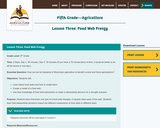
Students learn that when one part of a food web changes, it impacts other parts of the web. Students learn that stewardship decisions impact the different components of food webs in different ways.
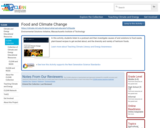
In this activity, students listen to a podcast and then investigate causes of and solutions to food waste, plant-based recipes to get excited about, and the diversity and variety of heirloom foods.
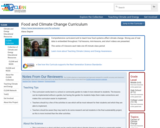
Comprehensive curriculum/unit to teach how food systems affect climate change. Strong use of real data is embedded throughout. Full lessons, mini-lessons, and short videos are presented.

Assigning students particular roles can be an effective way to organize groups and simulate job site communication. Assigning a ‘foreman’ for groups in an agriculture education classroom helps to distribute responsibility among group members and ensures accountability for all students’ participation. As students practice assuming greater responsibility, they can develop new skills. Designed by Donald Fowler.
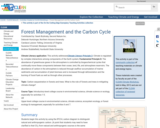
Students begin this activity by using the IPCC4, carbon diagram to distinguish natural and anthropogenic carbon. (A point that students may need to have clarified is that CO2 from natural and anthropogenic sources is the same molecule.). Students begin with Activity 1 , calculating the overall carbon transfer for a year, followed by an examination of the role of forests in the carbon cycle. This suite of activities includes 7 parts, and the selection of additional activities depends upon the discretion of the instructor and focus of the class.
(Note: this resource was added to OER Commons as part of a batch upload of over 2,200 records. If you notice an issue with the quality of the metadata, please let us know by using the 'report' button and we will flag it for consideration.)

Here is a forestry lab activity that is geared for early childhood, preschool, and early elementary ages. It involves a table setup, outdoor activities, and YouTube videos for the instructor to reference.
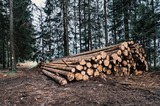
This lesson presents an overview of ecosystems of a forest. Upon completion of this unit students will know the dynamics of forestry management. This represents a portion of the Introduction to Agriculture, Food, and Natural Resources (AFNR) series in Nebraska middle and high school agricultural education.
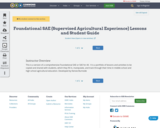
This is a version of a comprehensive Foundational SAE or SAE for All. It is a portfolio of lessons and activities to be copied and shared with students, which they fill in, manipulate, and track through their time in middle school and high school agricultural education. Developed by Kensie Burnside

Designing the school garden will require Math, ELA, and Science skills with Scientific Method being used as a foundation. Students will create a school garden as a result of the work they preloaded into the activity. Finally, students will decide if the school garden has an improvements needed for future growth or more growth.

A lesson learning about how soybeans and fuel can have an impact on your future and possible careers.

In this 6th grade Science class, students learn how to build a compost pile, learn about organisms needed for decomposition, and begin to understand the purpose of compost in the garden.

Gene mutations occur naturally through the DNA replication process with some results being fatal and others being helpful. This lesson will explore the types of mutations that occur, the effect they have on DNA, and examples of diseases or conditions caused by the specific type of mutation. Students will participate in a gallery walk to learn more about the types of mutations.
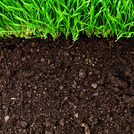
This resource contains three lab activities on topic of general soil science.
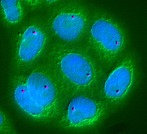
Many times, gene mutations lead to some sort of genetic disease or disorder. Through this lesson, students will explore a genetic disease, caused by a specific type of gene mutation (previously learned about) and present their findings to the class.
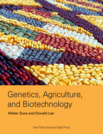
Short Description:
This textbook provides an introduction to plant genetics and biotechnology for the advancement of agriculture. A clear and structured introduction to the topic for learners new to the field of genetics, the book includes: an introduction to the life cycle of the cell, DNA and how it relates to genes and chromosomes, DNA analysis, recombinant DNA, biotechnology, and transmission genetics.
Long Description:
This textbook provides an introduction to plant genetics and biotechnology for the advancement of agriculture. A clear and structured introduction to the topic for learners new to the field of genetics, the book includes: an introduction to the life cycle of the cell, DNA and how it relates to genes and chromosomes, DNA analysis, recombinant DNA, biotechnology, and transmission genetics.
Word Count: 45195
(Note: This resource's metadata has been created automatically by reformatting and/or combining the information that the author initially provided as part of a bulk import process.)